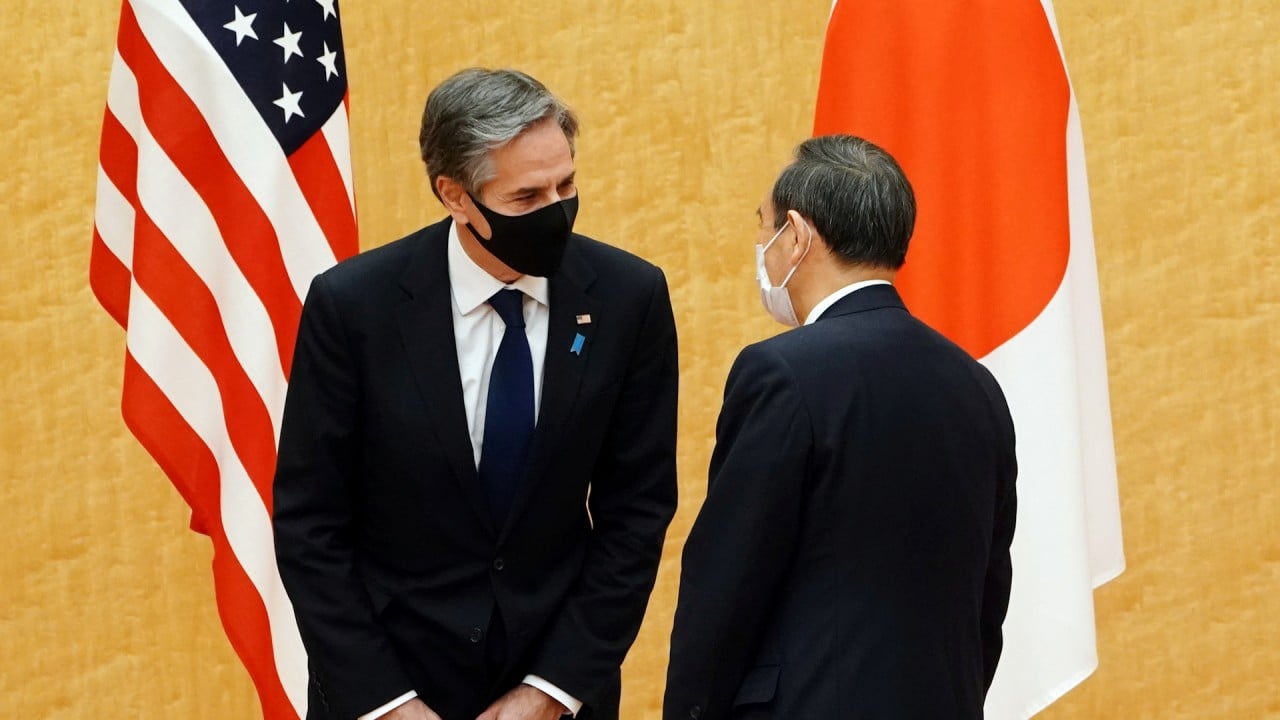
US-China relations: No ‘unrealistic expectations’ for Alaska meeting
- Washington officials say Thursday’s high-level diplomatic sit-down in Anchorage is intended as an initial discussion
- Difficult issues will be raised, but don’t expect any specific negotiated deliverables, they warn
China hopes to find common ground with US ahead of Alaska talks
“The conversations in Anchorage are very much intended as an initial discussion to understand … our interests, intentions and priorities,” a senior administration official said on a background briefing call with reporters. The US did not anticipate any “specific negotiated deliverables” to result from the talks, they said, nor would there be a joint statement issued following the meeting.
“We don’t have any unrealistic expectations,” another senior official on Tuesday’s call said. “We’re of course coming to these discussions with a very clear-eyed view about [China’s] pretty poor track record of keeping its promises.”
Representing Beijing at Thursday’s meeting will be Yang Jiechi, China’s top diplomat, and Foreign Minister Wang Yi. Blinken will be joined by White House National Security Adviser Jake Sullivan, both of whom will be returning from meetings with allied governments in the Indo-Pacific region.
Despite low expectations for deliverable commitments from Beijing, officials said on Tuesday they believed the US was going into the talks with an “increasingly strong hand”, noting progress in the country’s ongoing pandemic recovery and the administration’s efforts to reinvigorate alliances with global partners.
The first official said the administration would “lay down some specific areas where we believe Beijing does need to take some steps to change course”, among them its “economic coercion” of US allies such as Australia. Other areas expected to be raised by Blinken and Sullivan include Hong Kong, Xinjiang, Taiwan, China’s actions in the South China Sea, and technology.
The US side will also seek to put to rest a perception held by some in Beijing that there are discrepancies between what the administration says in public and its messages behind closed doors, the official said.
“We think it’s really important that we dispel that idea very early, and that we’re very clear with delivering the same messages in private, that you have heard from us in public.”
While the meeting is being held thousands of miles away from either capital, US officials have been eager to highlight the symbolic weight of the administration’s first meeting with China taking place on US soil. “Being on our own territory was extremely important for this meeting,” the official said.
The officials did not answer questions about which side had first requested the meeting, which Beijing last week said had been organised following a proposal from Washington.

01:12
US Secretary of State Blinken meets Japanese prime minister Suga to ‘reaffirm US-Japan alliance’
Speaking earlier on Tuesday, White House press secretary Jen Psaki said the administration expected there would be “parts of the conversation that could be difficult”. But the meeting also provided an opportunity to discuss issues on which the US and China could work together, such as the climate crisis and nuclear non-proliferation, she told reporters aboard Air Force One.
US officials, including Blinken, have stressed the meeting will not constitute the beginning of an ongoing dialogue. “This is not the resumption of a particular dialogue mechanism, or the beginning of a dialogue process,” one of the officials said on Tuesday. “This is very much about sitting down, getting an understanding of each other, and then taking that back and taking stock.”
The meeting comes as the Biden administration shores up alliances in the Indo-Pacific region to counter what Washington considers to be Beijing’s coercive actions in the region.
China warns European Union against sanctions over Xinjiang
“We’re united in the vision of a free and open Indo-Pacific region, where countries follow the rules, cooperate whenever they can, and resolve their differences peacefully,” Blinken said of the US-Japan partnership. “And in particular, we will push back if necessary when China uses coercion or aggression to get its way.”
Ahead of Thursday’s meeting, Beijing said it hoped the talks would offer an opportunity for both sides to “get China-US relations back on track”, while also warning of red lines and vowing to “firmly safeguard its sovereignty, security and developmental interests”.
Addressing reporters last week amid a wave of condemnation from the US and others over Beijing’s move to overhaul Hong Kong’s electoral system, foreign ministry spokesman Zhao Lijian called on the US to “stop interfering in China’s Hong Kong affairs and refrain from going further down the wrong path”.

